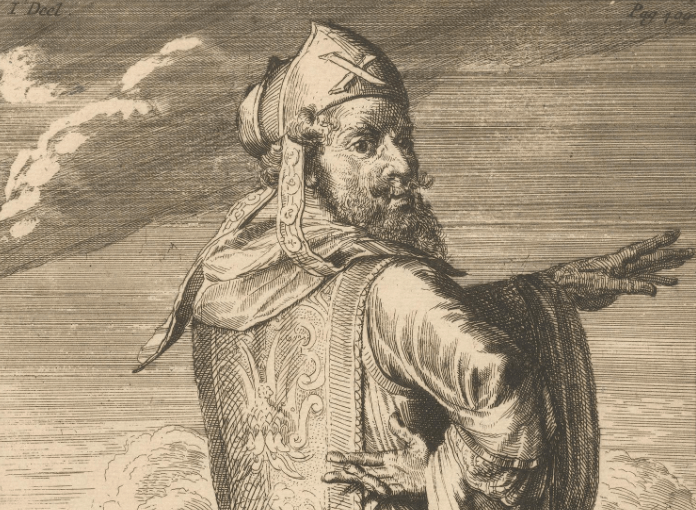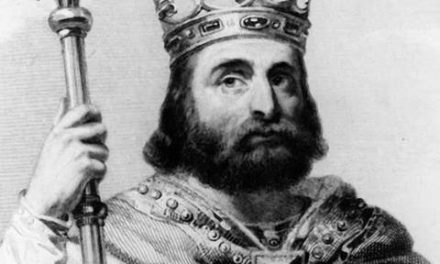The title of this episode is, “Can’t We All Just Get Along?”
In our last episode, we began our look at how the Church of the 4th & 5th Cs attempted to describe the Incarnation. Once the Council of Nicaea affirmed Jesus’ deity, along with His humanity, Church leaders were left with the task of finding just the right words to describe WHO Jesus was. If He was both God & Man as The Nicaean Creed said, how did these two natures relate to one another?
We looked at how the churches at Alexandria & Antioch differed in their approaches to understanding & teaching the Bible. Though Alexandria was recognized as a center of scholarship, the church at Antioch kept producing church leaders who were drafted to fill the role of lead bishop at Constantinople, the political center of the Eastern Empire. While Rome was the undisputed lead church in the West, Alexandria, Antioch & Constantinople vied with each other over who would take the lead in the East. But the real contest was between Alexandria in Egypt & Antioch in Syria.
The contest between the two cities & their churches became clear during the time of John Chrysostom from Antioch & Theophilus, lead bishop at Alexandria. Because of John’s reputation as a premier preacher, he was drafted to become Bishop at Constantinople. But John’s criticisms of the decadence of the wealthy, along with his refusal to tone down his chastisement of the Empress, caused him to fall out of favor. I guess you can be a great preacher, just so long as you don’t turn your skill against people in power. Theophilus was jealous of Chrysostom’s promotion from Antioch to the capital and used the political disfavor growing against him to call a synod at which John was disposed from office as Patriarch of Constantinople.
That was like Round 1 of the sparring match between Alexandria and Antioch. Round 2 and the deciding round came next in the contest between 2 men; Cyril & Nestorius.
Cyril was Theophilus’ nephew & attended his uncle at the Synod of the Oak at which Chrysostom was condemned. Cyril learned his lessons well and applied them with even greater ferocity in taking down his opponent, Nestorius.
Before we move on with these 2, I need to back-track some & bore the bejeebers out of you for a bit.
Warning: Long, hard to pronounce, utterly forgettable word Alert.
Remember è The big theological issue at the forefront of everyone’s mind during this time was how to understand Jesus.
Okay, we got it: à
The Nicaean Creed’s been accepted as basic Christian doctrine.
The Cappadocian Fathers have given us the right formula for understanding the Trinity.
There’s 1 God in 3 persons; Father, Son & Holy Spirit.
Now, on to the next thing: Jesus is God and Man. How does that work? Is He 2 persons or 1? Does He have 1 nature or 2? And if 2, how do those natures relate to one another?
A couple ideas were floated to resolve the issue but came up short; Apollinarianism and Eutychianism.
Apollinaris of Laodicea lived in the 4th C. A defender of the Nicene Creed, he said in Jesus the divine Logos replaced His human soul. Jesus had a human body in which dwelled a divine spirit. Our longtime friend Athanasius led the synod of Alexandria in 362 to condemn this view but didn’t specifically name Apollinaris. 20 Yrs later, the Council of Constantinople did just that. Gregory of Nazianzus supplied the decisive argument against Apollinarianism saying, “What was not assumed was not healed” meaning, for the entire of body, soul, and spirit of a person to be saved, Jesus Christ must have taken on a complete human nature.
Eutyches was a, how to describe him; elderly-elder, a senior leader, an aged-monk in Constantinople who advocated one nature for Jesus. Eutychianism said that while in the Incarnation Jesus was both God & man, His divine nature totally overwhelmed his human nature, like a drop of vinegar is lost in the sea.
Those who maintained the dual-nature of Jesus as wholly God and wholly Man are called dyophysites. Those advocating a single-nature are called Monophysites.
What happened between Cyril & Nestorius is this . . .
Nestorius was an elder and head of a monastery in Antioch when the emperor Theodosius II chose him to be Bishop of Constantinople in 428.
Now, what I’m about to say some will find hard to swallow, but while Nestorius’s name became associated with one of the major heresies to split the church, the error he’s accused of he most likely wasn’t guilty of. What Nestorius was guilty of was being a jerk. His story is typical for several of the men who were picked to lead the church at Constantinople during the 4th through 7th Cs; effective preachers but lousy administrators & seriously lacking in people skills. Look, if you’re going to be pegged to lead the Church at the Political center of the Empire, you better be a savvy political operator, as well as a man of moral & ethical excellence. A heavy dose of tact ought to have been a pre-requisite. But guys kept getting selected who came to the Capital on a campaign to clean house. And many of them seem to have thought subtlety was the devil’s tool.
As soon as Nestorius arrived in Constantinople, he started a harsh campaign against heretics, meaning anyone with whom he disagreed. It wouldn’t take long before his enemies accused him of the very thing he accused others of. But in their case, their accusations were born of jealousy.
Where they deiced to take offense was when Nestorius balked at the use of the word Theotokos. The word means God-bearer, and was used by the church at Alexandria for the mother of Jesus. While the Alexandrians said they rejected Apollinarianism, they, in fact, emphasized the divine nature of Jesus, saying it overwhelmed His human nature. The Alexandrian bishop, Cyril, was once again jealous of the Antiochan Nestorius’ selection as bishop for the Capital. As his uncle Theophilus had taken advantage of Chrysostom’s disfavor to get him deposed, Cyril laid plans for removing the tactless & increasingly unpopular Nestorius. The battle over the word Theotokos became the flashpoint of controversy, the crack Cyril needed to pry Nestorius from his position.
To supporters of the Alexandrian theology, Theotokos seemed entirely appropriate for Mary. They said she DID bear God when Jesus took flesh in her womb. And to deny it was to deny the deity of Christ!
Nestorius and his many supporters were concerned the title “Theotokos” made Mary a goddess. Nestorius maintained that Mary was the mother of the man Who was united with the divine Logos, and nothing should be said that might imply she was the “Mother à of God.” Nestorius preferred the title Christokos; Mary was the Christ-bearer. But he lacked a vocabulary and the theological sophistication to relate the divine and human natures of Jesus in a convincing way.
Cyril, on the other hand, argued convincingly for his position from the Scriptures. In 429, Cyril defended the term Theotokos. His key text was John 1: 14, “The Word became flesh.” I’d love to launch into a detailed description of the nuanced debate between Cyril and Nestorius over the nature of Christ but it would leave most, including myself, no more clued in than we are now.
Suffice it to say, Nestorius maintained the dual-nature-in-the-one-person of Christ while Cyril stuck to the traditional Alexandrian line and said while Jesus was technically 2 natures, human & divine, the divine overwhelmed the human so that He effectively operated as God in a physical body.
Where this came down to a heated debate was over the question of whether or not Jesus really suffered in His passion. Nestorius said that the MAN Jesus suffered but not His divine nature, while Cyril said the divine nature did indeed suffer.
When the Roman Bishop Celestine learned of the dispute between Cyril and Nestorius, he selected a churchman named John Cassian to respond to Nestorius. He did so in his work titled On the Incarnation in 430. Cassian sided with Cyril but wanted to bring Nestorius back into harmony. Setting aside Cassian’s hope to bring Nestorius into his conception of orthodoxy, Celestine entered a union with Cyril against Nestorius and the church at Antioch he’d come from. A synod at Rome in 430 condemned Nestorius, and Celestine asked Cyril to conduct proceedings against him.
Cyril condemned Nestorius at a Synod in Alexandria and sent him a notice with a cover letter listing 12 anathemas against Nestorius and anyone else who disagreed with the Alexandrian position. For example à “If anyone does not confess Emmanuel to be very God, and does not acknowledge the Holy Virgin to be Theotokos, for she brought forth after the flesh the Word of God become flesh, let him be anathema.”
Receiving the letter from Cyril, Nestorius humbly resigned and left for a quiet retirement at Leisure Village in Illyrium. à Uh, not quite. True to form, Nestorius ignored the Synod’s verdict.
Emperor Theodosius II called a general council to meet at Ephesus in 431. This Council is sometimes called the Robber’s Synod because it turned into a bloody romp by Cyril’s supporters. As the bishops gathered in Ephesus, it quickly became evident the Council was far more concerned with politics than theology. This wasn’t going to be a sedate debate over texts, words & grammar. It was going to be a physical contest. Let’s settle doctrinal disputes with clubs instead of books.
Cyril and his posse of club-wielding Egyptian monks, and I use the word posse purposefully, had the support of the Ephesian bishop, Memnon, along with the majority of the bishops from Asia. The council began on June 22, 431, with 153 bishops present. 40 more later gave their assent to the findings. Cyril presided. Nestorius was ordered to attend but knew it was a rigged affair and refused to show. He was deposed and excommunicated. Ephesus rejoiced.
On June 26, John, bishop of Antioch, along with the Syrian bishops, all of whom had been delayed, finally arrived. John held a rival council consisting of 43 bishops and the Emperor’s representative. They declared Cyril & Memnon deposed. Further sessions of rival councils added to the number of excommunications.
A report reached Theodosius II, and representatives of both sides pled their case. Theodosius’s first instinct was to confirm the depositions of Cyril, Memnon, & Nestorius. Be done with the lot of them. But a lavish gift from Cyril persuaded the Emperor to dissolve the Council and send Nestorius into exile. A new bishop for Constantinople was consecrated. Cyril returned in triumph to Alexandria.
From a historical perspective, it’s what happened AFTER the Council of Ephesus that was far more important. John of Antioch sent a representative to Alexandria with a compromise creed. This asserted the duality of natures, in contrast to Cyril’s formulation, but accepted the Theotokos, in contrast to Nestorius. This compromise anticipated decisions to be reached at the next general church Council at Chalcedon.
Cyril agreed to the creed and a reunion of the churches took place in 433. Since then, historians have asked if Cyril was being a statesman in agreeing to the compromise or did he just cynically accept it because he’d achieved his real purpose; getting rid of Nestorius. Either way, the real loser was Nestorius. Theodosius had his books burned, and many who agreed with Nestorius’s theology dropped their support.
Those who represented his theological emphases continued to carry on their work in eastern Syria, becoming what History calls the Church of the East, a movement of the Gospel we’ll soon see that reached all the way to the Pacific Ocean.
While in exile, Nestorius wrote a book that set forth the story of his life and defended his position. Modern reviews of Nestorius find him to be more of a schismatic in temperament than a heretic. He denied the heresy of which he was accused, that the human Jesus and the divine Christ were 2 different persons.
20 yrs after the Council of Ephesus, which many regarded as a grave mistake, another was called at Chalcedon. Nestorius’ teaching was declared heretical and he was officially deposed. Though already in exile, he was now banished by an act of the Church rather than Emperor. In one of those odd facts of history, though what Nestorius taught about Christ was declaimed, it turned out to be the position adopted by the Creed that came out of the Council of Chalcedon. When word reached Nestorius in exile of the Council’s finding he said they’d only ratified what he’d always believed & taught.
There’s much to learn from this story of conflict and resolution.
First, many of the doctrines we take for granted as being part and parcel of the orthodox Christian faith, came about through great struggle and debate of some of the most brilliant minds history’s known. Sometimes, those ideas were popular and ruled because they were expedient. But mere politics can’t sustain a false idea. There are always faithful men and women who love truth because it’s true, not because it will gain them power, influence or advantage. They may suffer at the hands of the corrupt for a season, but they always prevail in the end.
We ought to be thankful, not only to God for giving us the truth in His Word and the Spirit to understand it, but also to the people who at great cost were willing to hazard themselves to make sure Truth prevailed over error.
Second, Too often, people look back on the “Early Church” and assume it was a wonderful time of sweet harmony. Life was simple, everyone agreed and no one ever argued. Hardly!
Good grief. Have they read the Bible? The disciples were forever arguing over who was greatest. Paul & Barnabas had a falling out over John Mark. Paul had to get in Peter’s face when he played the hypocrite.
Yes, for sure, in Acts we read about a brief period of time when the love of the fellowship was so outstanding it shook the people of Jerusalem to the core and resulted in many coming to faith. But that was only a brief moment that soon passed.
God wants His people to be in unity. True unity, under the truth of the Gospel, is an incredibly powerful proof of our Faith. But the idea that the Early Church was a Golden Age of Unity is a fiction. Philip Jenkins’ book on the battle over the Christology of the 4th & 5th Cs. is titled Jesus Wars.
The Church as a whole would be better served today in its pursuit of unity if each local congregation focused its primary efforts on loving and serving one another through the power of the Spirit. It’s inevitable if they excelled at that, they’d begin looking at all churches and believers in the same way, and unity would be real rather than a program with a start & end date or a campaign based on personalities and hype.
Hey – come to think of it, that’s what DID bring about that short glorious moment of blissful harmony in Jerusalem among the followers of Jesus – they loved and served one another in the power of the Spirit.





